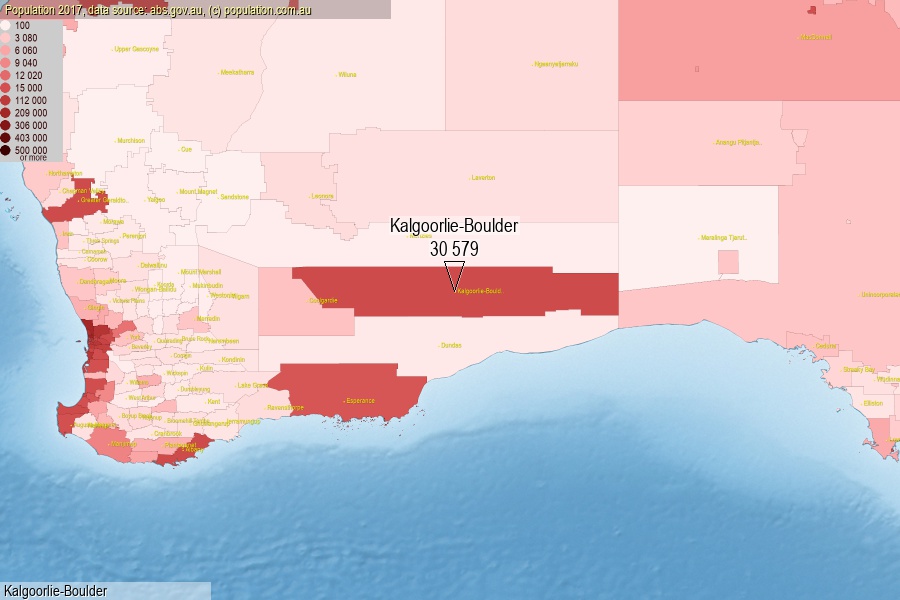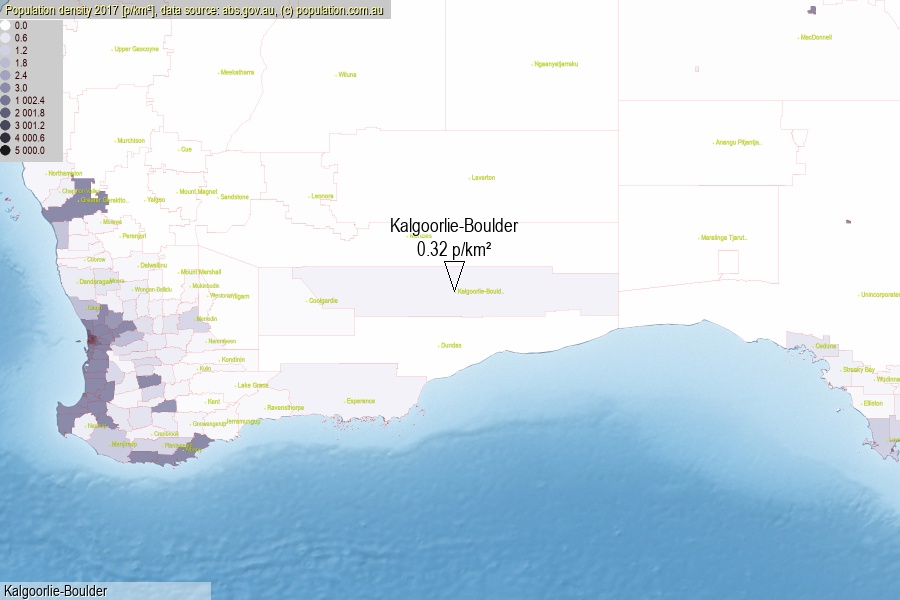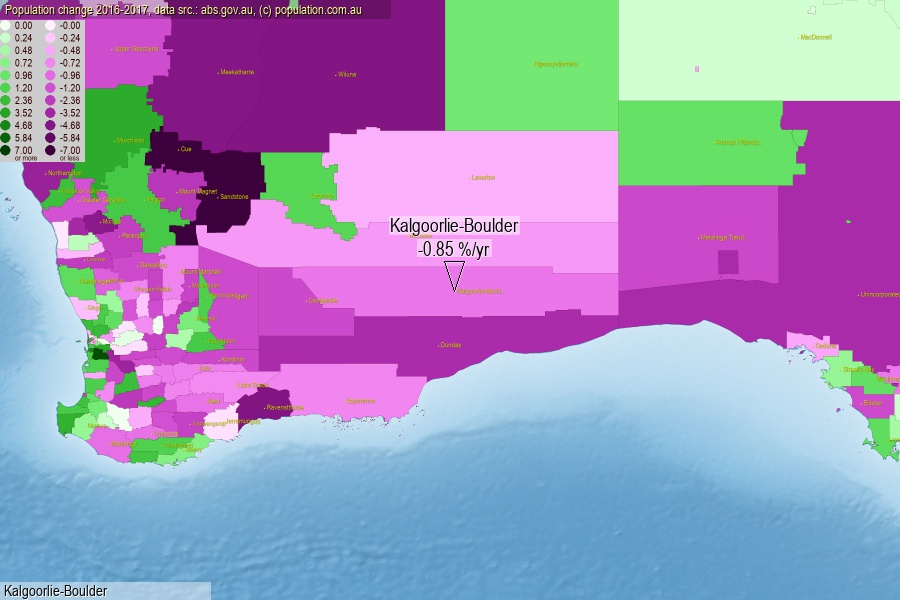 population.com.au
population.com.auLast official estimated population of Kalgoorlie-Boulder City (as Local Government Area) was 30 579 people (on 2017-06-30)[2]. This was 0.12% of total Australian population and 1.18% of WA population. Area of Kalgoorlie-Boulder is 95 498.10 km², in this year population density was 0.32 p/km² . If population growth rate would be same as in period 2016-2017 (-0.85%/yr), Kalgoorlie-Boulder population in 2025 would be 28 569. [0]



Click to enlarge. Kalgoorlie-Boulder is located in the center of the images.
Population [people], population density [p./km²] and population change [%/year] [2]
[1996-2001] +0.12 %/Y
[2001-2002] -0.11 %/Y
[2002-2003] +1.06 %/Y
[2003-2004] -0.38 %/Y
[2004-2005] -0.28 %/Y
[2005-2006] +0.77 %/Y
[2006-2007] +0.55 %/Y
[2007-2008] +2.18 %/Y
[2008-2009] +1.82 %/Y
[2009-2010] +0.88 %/Y
[2010-2011] +1.44 %/Y
[2011-2012] +1.99 %/Y
[2012-2013] +1.27 %/Y
[2013-2014] -2.31 %/Y
[2014-2015] -2.31 %/Y
[2015-2016] -2.86 %/Y
[2016-2017] -0.85 %/Y
[0] Calculated with linear interpolation from officially estimated population
[1] Read more about LGA and Australian Statistical Geography Standard (ASGS) on abs.gov.au
[2] Population data from Australian Bureau of Statistics (Population and density: 2017; change: 2016-2017)
[3] Digital Boundaries: Australian Statistical Geography Standard (ASGS) 2016.